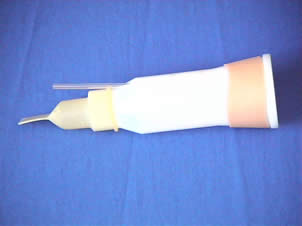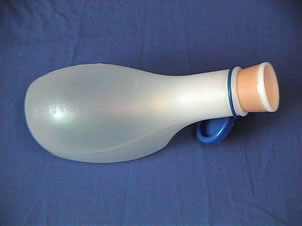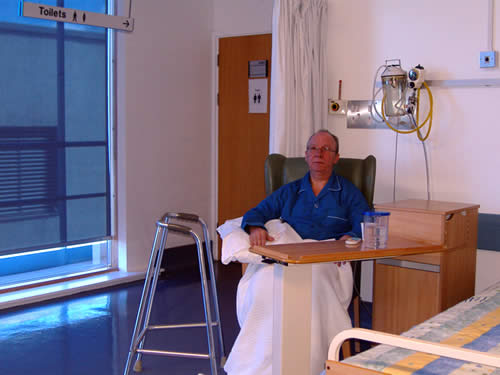In the next few pages we will look at these investigations to diagnose Annie’s problem in more detail.
Category: Advancing Modules
After 1 week
- The right sided weakness has improved greatly, and Annie is able to walk independently
- Her arm and hand continue to have some decreased sensation
- Aphasia/word finding difficulties have resolved but she has ongoing problems with fatigue
- Bowel function has been normal – with daily soft formed stool passed
- However there have been several episodes of damp underwear and frequent visits to the toilet over the past few days
Background
- She had dysarthria and aphasia – this resolved within 48 hours
- She passed her water swallow screening test
- Her cognition remained intact, and she was able to follow instruction and had good insight into her diagnosis of cerebral infarction (left partial anterior circulation stroke (PACS))
- Her past medical history includes a hysterectomy when she was 35 years old due to fibroids. She has been on hormone replacement therapy (HRT) since and is on no other medication.
- Her cholesterol on admission was noted to be raised slightly at 5.1
- There was no evidence of diabetes
Case 4: Annie Johnson

![]()
- Annie Johnson is 51 years of age
- She lives with her husband and dog in a two storey home in a remote highland village
- They have no children
- Annie is a full time potter and runs her own business
- She is very active socially
- She presented in A& E with right sided weakness. Her power on the right side was 4/5 on both right upper and lower limbs. It was noted she had a sensation deficit in her right arm, more pronounced in her hand. Her power returned to normal within 48 hours. However the sensation problems remained
Summary
![]()
Ensure his environment provides easy access to toilet/bathroom and allows John to call for assistance when required:
- Should have call bell at hand
- Should have access to walking aid
- Clearly sign post bathroom areas
- Due to cognitive impairment nursing staff to give prompts and assistance to use toilet and prevent incontinence
Ensure John has access to appropriate rehabilitation equipment to support recovery of continence:
- Should have urinals with non-spill adaptors/Superabsorbent gel (e.g. VernaGel™)
- Should have adapted clothing
- Should have short term access to pads in hospital to support social continence and maintain his dignity
- John would need to be assessed for any ongoing provision of containment products once home
Equipment aids
Superabsorbent gel (VernaGel™) and a non-spill adapter



Equipment that might help John to overcome these functional challenges
Q. Select Yes or No for each.
Stroke related factors
In addition to environmental factors there are also stroke-related factors that contribute to John’s functional incontinence that should be considered as part of his bladder and bowel rehabilitation.
Select the crosses for more on stroke-related factors that contribute to John’s functional incontinence.
The toilet environment
Q. Use the arrow below the image to find out how you could you improve this environment for stroke patients with continence problems?
Some of these adaptations can be introduced with minimal cost whilst others would require some investment but can make an important difference to patients’ independence and ability to manage their continence.
NB: Also consider that this is not an ideal toileting environment for stroke patients as it is too small for wheelchair access and a walking frame/assistance from another would be challenging.
Continence promoting environment
These factors below help to create an environment that supports bladder and bowel rehabilitation and promotes continence.

- John’s bed is near to toilet in room
- John’s chair sitting at side of bed closest to toilet
- John’s walking frame is within reaching distance
- Bed table in front of John with drinks accessible
- Call bell beside John
- No obstruction to toilet access
- Bed screen pulled back
- Sign on toilet door


